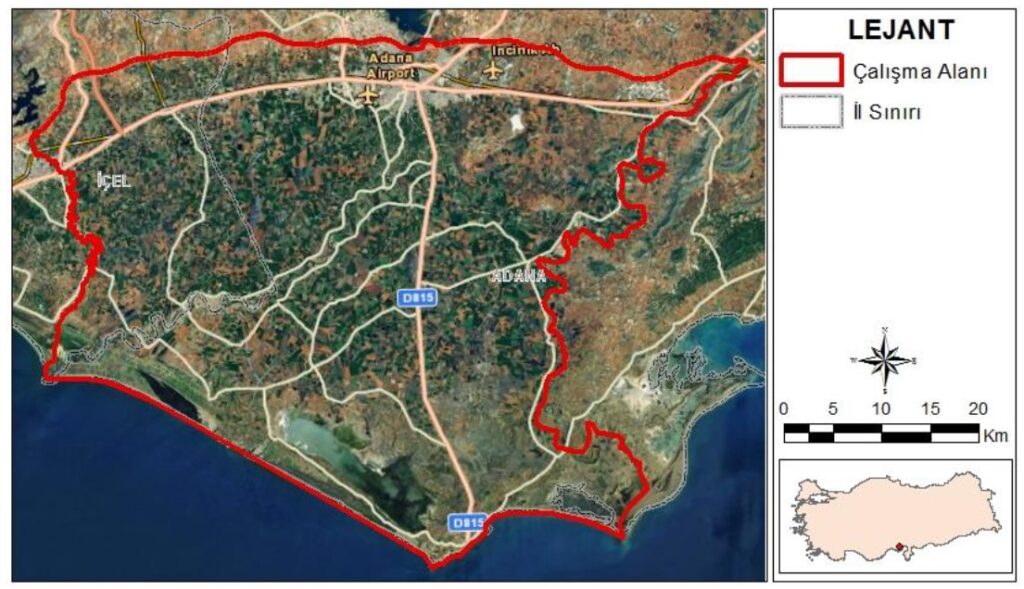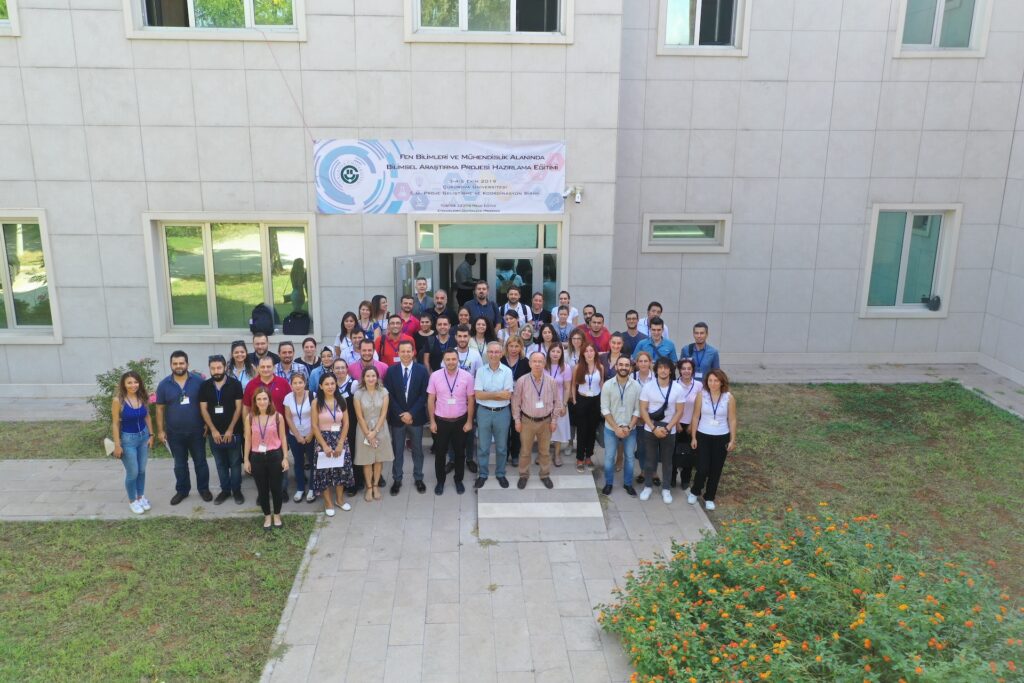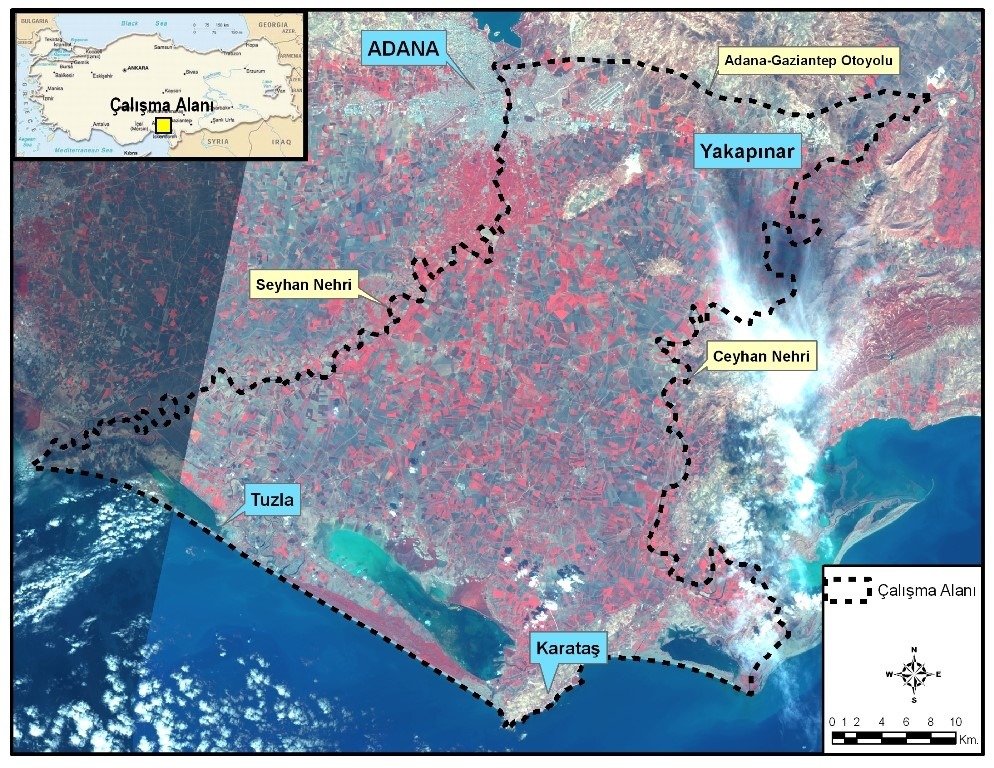| Project Title | Boosting Adult System Education In Agriculture – AGRI BASE |
| Supported by | Erasmus+ K2 Action Strategic Partnerships |
| Start-End date | 2015-2017 |
| Coordinator | Prof.Dr.Süha BERBEROĞLU |
| ABSTRACT
1) Area definition: The research area can be taken in three scales: I) Regional or watershed (Seyhan watershed) scale to cover the issues in more ecologically complete manner (e.g., hydrological system dynamics) ; ii) Lower Seyhan Plain (LSP) (Landscape scale) and iii) Water user Association (Akarsu) (local and farm scale).
Lower Seyhan Plain (LSP) is one of the most productive agricultural irrigated areas in Turkey providing about 10% of the total irrigated agricultural production. Irrigation and drainage infrastructures in the LSP have been constructed by State Hydraulic Works (DSI) since 1953. The Mediterranean climate and the alluvial very productive soils make the area highly suitable for irrigated agriculture. Main crops cultivated are maize, cotton, wheat and citrus fruits (orange, mandarin, lemon), but also water melon, groundnuts and various vegetables are produced for the local markets as well as for export into the EU as well as Russia and neighbour countries. Crop rotations are characterized by traditional management strategies developed by the farmers, but local cropping pattern are frequently driven by market prices, state subsidies and water availability.
2) Theme or aspect: Socio-economic system analysis will be done to provide information on functional and structural dynamics. Research in this regard will comprise management related aspects on the field scale, i.e. planting strategies, rotation principles, decision making, cost-efficiency analysis, etc. The analysis of water governance will reveal information on their capacities to perform water management functions including water quality control and nature protection for decision support. This worktask is in three folds: Integrated socio-economic analysis of current market orientation and related farm management and cropping pattern with respect to the new challenges defined in the European Common Agricultural Policy (CAP) and specific consideration of (i) innovative state-of-the-art water saving irrigation techniques, (ii) conservation agriculture. Institutional governance analysis and development of new models for good governance as a prerequisite for implementing supportive regulation to establish best-practice farm management options that are economically and environmentally sustainable and in addition optimize water and fertilizer usage with respect to recognized future market trends and adaptation to likely impacts from climate change. In realizing this purpose elaborates on the following objectives: (i) Identification of key stakeholder and end users in Cukurova. (ii) Assessment of effectiveness of governance with respect to institutional, regulatory and supply frameworks and related decision making structures relevant for public and irrigation water supply, water quality, and the environment. Development and evaluation of solutions to optimizing resource management towards (i) higher water savings and crop yields, (ii) protecting soil from degradation and enhancing environmental sustainability, (iii) higher fertilizer efficiencies and crop yields, (iv) market orientation and (v) institutional structures and governance strategies for sustainable irrigation management on farm and regional scale. In realizing this purpose it elaborates on the following objectives: (i) Analysis of market orientation of farmers with respect to cropping schedule, water, and labour and fertilizer allocation. (ii) Spatial and temporal allocation of irrigation water resources by finding an optimal cropping pattern at LSP and Akarsu scale that maximizes the total income accounting for the current cropping patterns and the needs of domestic and export markets relevant for the irrigation test region. (iii) Quantification of the expected impact of water saving strategies developed by the project using socio-economic indicators.
3) Problems and potential solutions; PROBLEMS POTENTIAL SOLUTIONS Insufficient education of farmers and lack of irrigation issues Sulama konusunda çiftçilerin eğitim yetersizliği Organising training courses in irrigation topics, such as irrigation methods, irrigation scheduling, water saving, new irrigation methods, environmental issues etc. Excessive use of water for irrigation Aşırı sulama • Developing close canal system • Changing the water pricing techniques (price should be based on amounth of used water), measuring the used water • Maintaining the irrigation systems including canals. • Rising the awareness of water saving techniques İn the farmers community Difficultiy in collecting irrigation fee (Approximately, only 60 % of the water fee can be collected ). Generally farmers are not willing to pay for maintenance of drainage canals.
Yüksek sulama ücretleri ve kanal bakım ücretlerinin çiftçiler tarafından ödenmek istenmemesi Weak organizational structure, the lack of coordination with other local and governmental agencies (such as between WUA and universities, DSI, ministry of agriculture, ministry of environmental etc.) Insufficient dissemination of research results and activities of related institutions, (there is a great demand from educated farmers) Organising knowledge and skill transfer from institutions to farmers. An organisation body should be established, this body should include government and NGO personal. Deterioriation of water quality at the lower plain. Farmers in lower plain use the drainage water. Monitoring the water quality and establishing a warning system. Improper land use along the coastal region where ecologically sensitive areas exist. For example, water melon and peanut growing take place on the coastal sand dunes. This illigal structure is tolareted by the local Government bodies because these areas are seen as unproductive and useless, so political pressure should be initiated in Ankara. Additionally, eco-tourism activities should be encouraged for the local people. Exces use of fertilizers & pesticides Precision farming, it should be introduced through selected farmers for demonstration. Irrigation techniques, furrow irrigation. Sprinkle system with the cost of energy. High water price Changing the pricing system, however measuring the amount of water used for each field requires additional set up and coast. Seeking subsidies from government.
4) Necessary research works to focus on; • to describe, understand and conserve the water resources in the AKARSU area at regional, landscape, and farm scale by: o assessing and evaluating the system state, o examining past practices, policies and impacts, o developing appropriate practices, strategies, tools and policies for the sustainable use of limited resources in LSP region. o Hydrological system analysis in the watershed scale • to analyse the natural environmental potentials for and constraints on human and socio-economic development. • to demonstrate or educate farmers to improve their awareness on water use and environmental issues. • to find out farmers behavior on water use in AKARSU and LSP. • to find out main socio-economic indicators that has effects on the farmers behavior. • to improve some management instruments for the related organizations. • Winter and summer crop pattern maps will be produced for 2012. • Wheat yield will be estimated for 2012. • A simple applicable model will be developed to predict corn and cotton yield in 2011 and 2012. Agricultural land use suitability will be estimated using decision support systems for dominant crops using soil texture, field capacity, soil depth, soil moisture, soil salinity and climate data applying remote sensing and GIS techniques in LSP.
|
|


